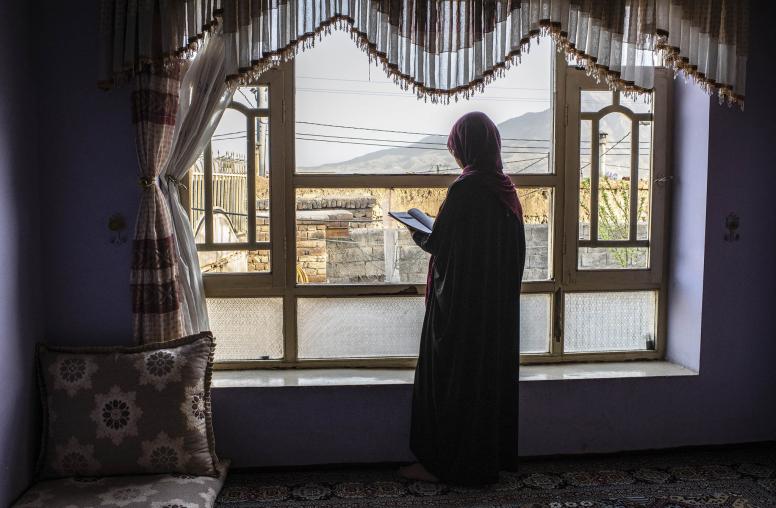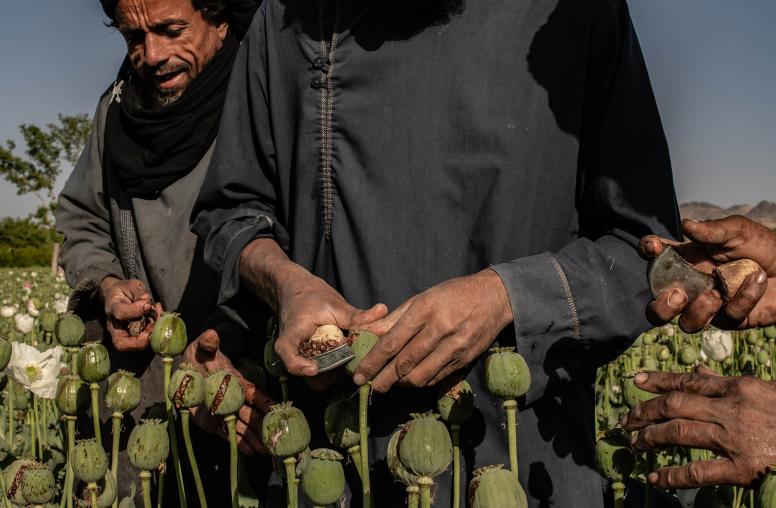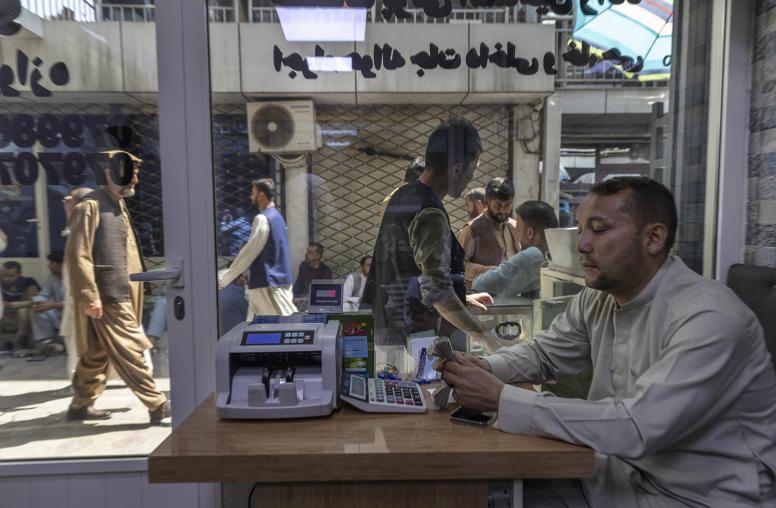Can India Help Bring Peace to Afghanistan?
With an already-established relationship, India could be the broker the Afghan peace process needs.
After February’s landmark U.S.-Taliban framework agreement, Afghanistan is still trying to initiate the next steps of their peace process, including intra-Afghan talks and prisoner exchanges. The country’s regional neighbors will be critical to the success or failure of the proposed talks. And while most attention naturally goes to Pakistan, with some focus also given to Iran and China, U.S. Special Representative Zalmay Khalilzad has made clear that India also has a vital role to play. After standing by Afghan leaders and their NATO partners for 20 years, India now needs to think about how it can support its Afghan partners as they stop trying to win the war and start trying for a successful negotiation.

Afghanistan and India enjoy a cordial, positive relationship and share many deep cultural, societal, and economic ties—ranging from Afghans’ love for Indian music and film, to strong trade and technology sharing, to medical tourism that goes back decades.
For the modern, post-Taliban Afghanistan, India has been a steadfast partner ever since reestablishing ties with the country after the 2002 Bonn Agreement. India has supported Afghans with roughly $3 billion in development assistance, far more than it has provided to any other nation. This assistance has taken the form of scholarships to students, much-needed infrastructure and transportation projects, medical teams to treat and heal Afghans, and building institutional capacities at the ministry level.
Concerns Over U.S.-Taliban Talks
For New Delhi, however, a strong and independent Afghanistan—with no Taliban role—provides access to Central Asia and reduces concerns about Pakistan’s influence in the region. Indian leaders have therefore been deeply concerned about U.S.-Taliban negotiations, fearing the agreement reached on the drawdown of U.S. forces would leave its Afghan partners to play a losing hand in talks with an emboldened Taliban.
Those worries are now coming to a head. After trying and failing to broker a deal between Afghan President Ashraf Ghani and his chief rival, Abdullah Abdullah, over a dispute regarding the 2019 presidential elections, U.S. Secretary of State Mike Pompeo issued an ultimatum on March 23: The U.S. reaffirmed its belief in a political settlement and announced it would continue with its troop withdrawal in accordance with the U.S.-Taliban deal—but also threatened $1 billion in cuts to assistance if Afghans were unable to resolve the political crisis in Kabul and facilitate talks with the Taliban.
After the ultimatum, Indian Prime Minister Narendra Modi immediately called President Ghani to reaffirm India’s commitment to the Afghan government. In the weeks since, President Ghani has managed to name a negotiating team and even gain support from Abdullah Abdullah and other opposition political leaders. The government also made progress on prisoner exchanges and subsequently hosted a Taliban delegation in Kabul to discuss the release of the prisoners—but those talks broke down by April 7, and Secretary Pompeo reportedly gave Afghan leaders another ultimatum about withdrawing all American forces if they can’t resolve their differences and get to the table.
If the U.S. were to follow through on these threats, Afghanistan’s current leaders would be severely undercut in their dealings with the Taliban—and the possibility of renewed violence would drastically increase. For India, an emboldened Taliban that leaves Afghanistan embroiled in a reignited conflict poses an even more serious risk. India’s core security concerns and its investments in education, health, infrastructure, and human rights—especially for women and youth—would all be threatened by a new stage of civil war in Afghanistan.
India as a Force for Peace?
It’s therefore in India’s interest to advocate for protecting those gains and continuing those investments so that any future political settlement is durable. In an important affirmation of Indian leaders’ support for peaceful resolution to the Afghan conflict, India sent representatives to the signing of the U.S.-Taliban agreement at the end of February. Afghans appreciate India voicing support for a peace with the Taliban that protects their gains.
Beyond affirmations of support, India should join other friends of Afghanistan to encourage its Afghan partners to set aside their differences and form a unified front for negotiations. Continued political infighting in Afghanistan only helps the Taliban, but clear and public support from India for a peace process that protects the many gains Afghans have enjoyed since 2002 will reaffirm India’s commitment to a peaceful and prosperous Afghanistan.
Second, India can offer technical assistance to Afghans involved in the peace process, as Afghanistan will need to resolve very fundamental issues regarding social and political organization. From constitutional and security force reform, to building democratic institutions in a peaceful Afghanistan, the newly appointed negotiating teams will spend months—or even years—developing a viable future. India can lend its technical expertise to Afghan negotiators.
Third, India can help prepare Afghan civil society. Peace processes are normally built around a core group of centralized negotiators—but this doesn’t preclude the process from outside influence. The negotiating team will be constantly pressured by various constituencies, including women’s groups, youth groups, ethnic minorities, and others. It is crucial that Afghan citizens engage with negotiators on a regular basis to advocate for the outcomes they desire. An informed and empowered civil society can effectively communicate the needs and concerns of citizens and influence the process. They can benefit from training and preparation, and the process will benefit from their activism. India’s civil society can play a crucial role in providing support to Afghan civil society—and Indian institutions that have a history of training Afghan officials can continue to train and invest in Afghanistan’s institutional building efforts.
India’s Regional Influence: Affecting Afghanistan’s Peace Process from the Outside
Beyond Afghanistan’s borders, India can also play an important role in the region at large. A big coalition of neighbors and regional powers, including both Pakistan and India, need to support a negotiated outcome for an Afghan peace agreement to be sustainable. India can engage with Iran, China, and the states of Central Asia to discuss preferred outcomes, redlines, and areas of mutual concern while encouraging states to support a process that leads to sustainable peace and to refrain from actions that could undermine the durability of the peace process.
Critically, India can make clear that it does not seek proxy conflict with Pakistan within a peaceful Afghanistan. Though unlikely, India and Pakistan would ideally have a quiet backchannel dialogue about their expectations and agree to do no harm to a sustainable Afghan peace. Even if they both support a negotiated outcome to Afghanistan’s civil war, Pakistan and India will likely not share specific interests. But how they choose to behave can bolster the chances of an acceptable outcome that reduces terrorism and violent extremism in the region, can keep Afghanistan from being a base for international terrorism, and can bring desperately needed peace to Afghans after more than four decades of violent conflict and political and economic instability. A stable Afghanistan can be an economic boon to both countries.
Finally, New Delhi can double down on support for medium- and long-term foreign aid. Amid the global coronavirus pandemic and economic recession, India may not be able to do too much to help with Afghanistan’s immediately shrinking revenues. But implementing any peace agreement will require partners, and India can lead by example by pledging to support a peaceful post-war Afghanistan and encouraging other donors to do the same.
The road to peace in Afghanistan is long and uncertain. But the U.S. determination to support a political process, the conclusion of a U.S.-Taliban framework, and the prospects for intra-Afghan negotiation mark the best chance for peace in many years. India can and should play a proactive role in supporting these efforts.



